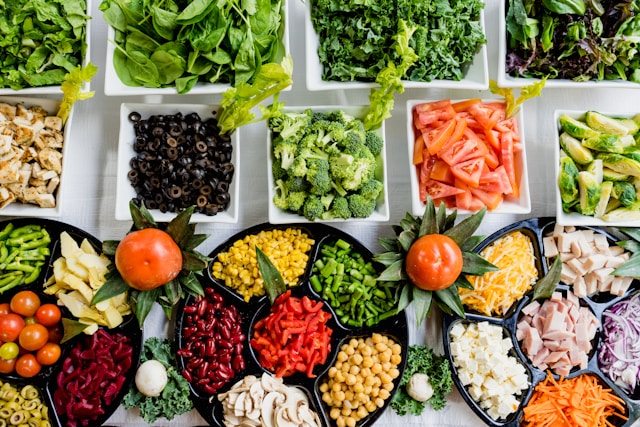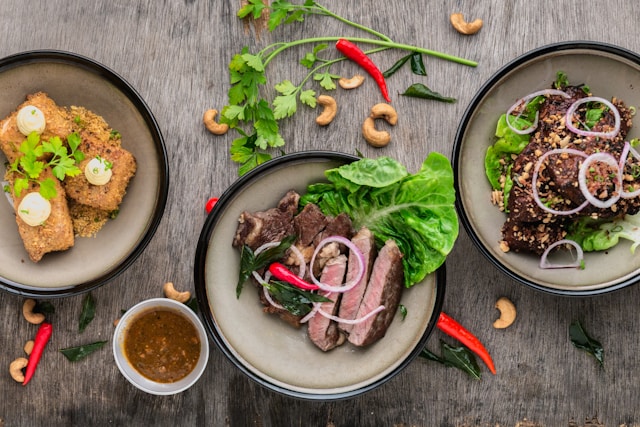Our caveman ancestors hunted and gathered food in the neighborhood. We may not be following in their footsteps today, but we still do our share of hunting and gathering, only now in the form of a trip to the supermarket.
A fad diet that is currently trending, the paleo diet is inspired by the eating habits of the Stone Age. Paleolithic man was a food gatherer, earning his living by hunting wild animals and birds, fishing, and picking wild fruits, nuts, and berries. Thus, the Paleo diet focuses primarily on fruits, vegetables, meat, seafood, and nuts.
All processed foods, including salt, sugar, cream, and oil, are prohibited, as well as milk and its products, grains, legumes, etc. Water, herbal teas, coconut water, freshly squeezed fruit or vegetable juice, and red wine are allowed, and coconut or almond milk can replace regular cow’s milk. Honey is preferable to sugar or artificial sweeteners. As far as modernity is concerned, the diet does not exclude boiled meat or vegetables.
What is the paleo diet and what is its meaning?
The Paleo diet is an eating plan based on foods similar to those that could be eaten during the Paleolithic era, which dates back to about 2.5 million to 10,000 years ago. The Paleo diet typically includes lean meats, fish, fruits, vegetables, nuts, and seeds – foods that could have been obtained through hunting and gathering in the past. The Paleo diet restricts foods that became commonplace when agriculture emerged – about 10,000 years ago. These foods include dairy, legumes, and grains.
The paleo diet has many different names: it is the Paleolithic diet, the Stone Age diet, the hunter-gatherer diet, and the caveman diet.
The goal of the paleo diet is to return to a way of eating that is more like what early humans ate. The reason for the diet is that the human body is not genetically matched to the modern diet that has emerged from agricultural practices – an idea known as the mismatch hypothesis.
Agriculture changed what people ate and made dairy products, grains, and legumes the staple foods of the human diet. This relatively late and rapid change in diet, according to the hypothesis, outpaced the body’s ability to adapt. This mismatch is believed to be a contributing factor to the prevalence of obesity, diabetes, and heart disease today.
What are the benefits of the paleo diet?
Although there are no full-fledged studies that reveal all the benefits of the Paleo diet, some scientists note that this eating plan can lead to a slight improvement in blood pressure in people with signs of metabolic syndrome, lower fasting blood sugar and triglyceride levels, which increase the risk of stroke and heart attack.
In addition, the paleo diet helps:
- Manage weight, including reducing waist circumference;
- Improve cholesterol balance;
- Increase the feeling of satiety;
- Reduce the risk of death from various causes.
For most people, switching to a paleo diet will mean increasing their intake of vegetables and fiber, which are important for gastrointestinal health and overall inflammation.
Is this diet suitable for everyone?
The ideal ratio of meat to carbohydrates varies from person to person. When following any diet, it’s important to pay attention to how you feel and talk to your doctor about tracking changes in cholesterol and blood sugar to make sure the Paleo diet is right for your body. Because Paleolithic diets varied greatly between hunter-gatherers depending on their geography, some people may need to further individualize the modern version of the Paleo diet to benefit.
Unfortunately, a common misconception about the Paleo diet is that you simply eat as much meat as you want, such as bacon. Emerging evidence suggests that eating mostly meat does not benefit the health of most people in the long term. Instead, the Paleo diet emphasizes eating a large variety of vegetables, which research shows is important for good health. Additionally, foods such as snack bars, which are technically free of cane sugar, grains, or legumes but are still highly processed, do not fit into a diet of unprocessed whole foods, regardless of the label.
A paleo diet requires time and resources to buy fresh, local produce and prepare meals at home, as well as time and energy for physical activity. This can be a barrier for many people. At the same time, it is almost impossible for vegetarians and vegans to succeed in the diet, as legumes are an important source of protein for them.



